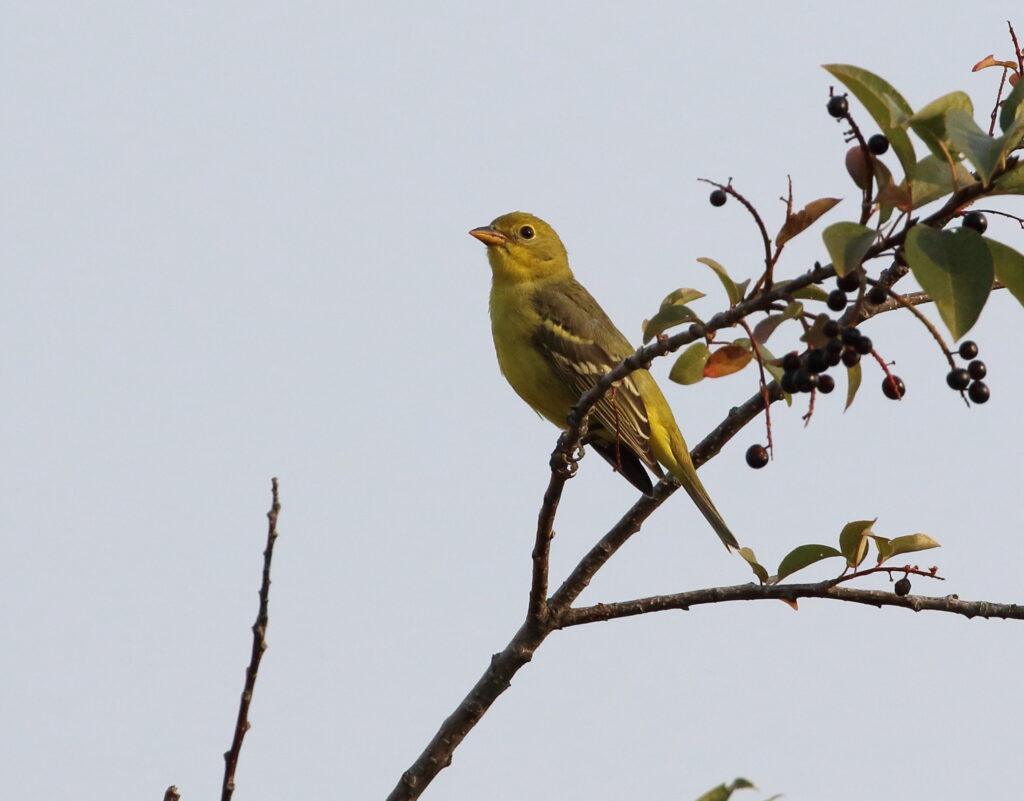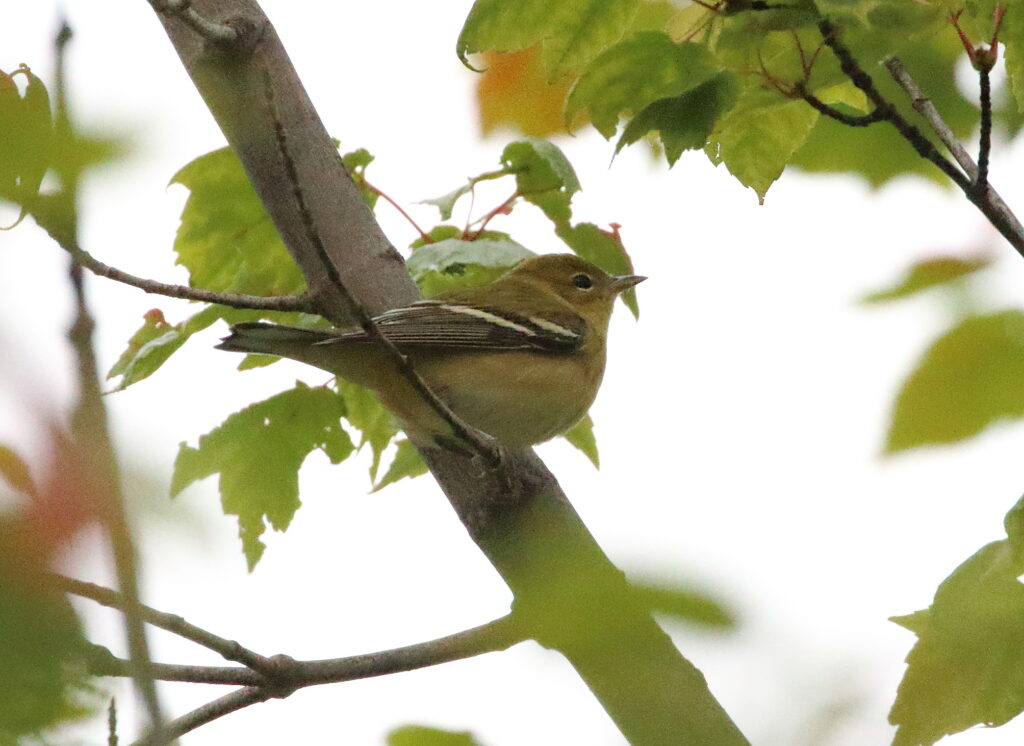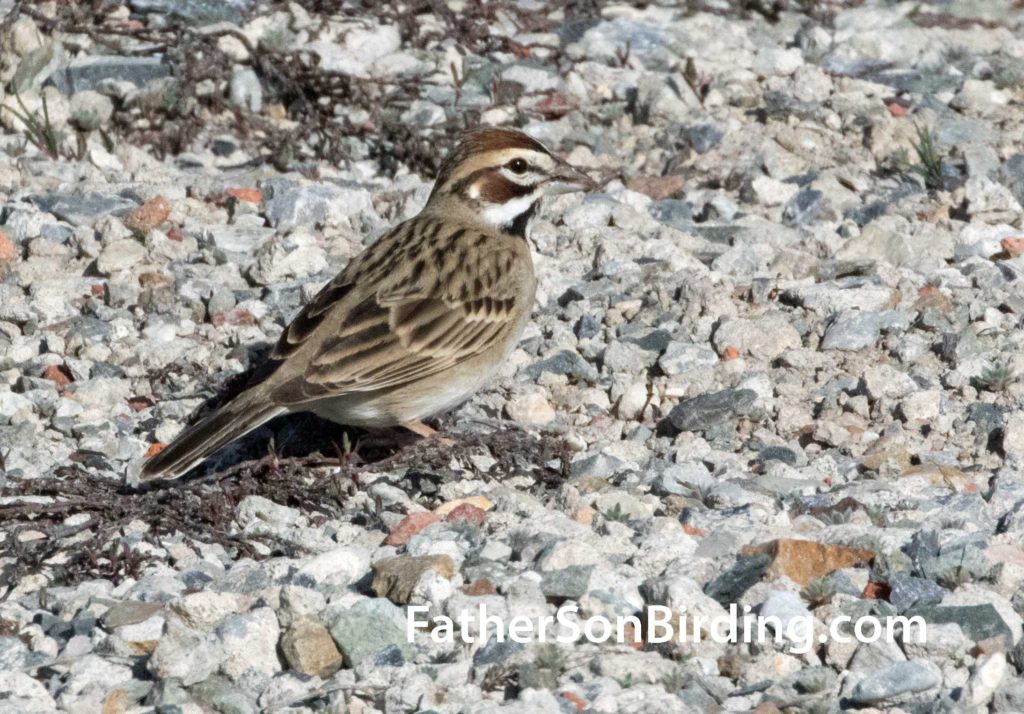Ever since learning about it, my dad and I have always wanted to attend the self-proclaimed “Biggest Week in American Birding” at the Black Swamp Observatory in Northwestern Ohio. This festival, set in the “Warbler Capital of the World” in mid-May, may be among the largest in the United States and even the world! In recent years up to 70,000 birders have attended the festival, funding (well, almost) the entire Midwestern economy for months on end. The reason that so many birders flock to this out-of-the-way state this time of year is the same reason we drive out to Freezeout Lake every March: spring migration. Instead of Snow Geese, though, the Black Swamp Observatory’s main attraction is passerines; specifically, warblers. Rivaling the giants of Central Park and High Island,Texas, thirty-warbler days are not uncommon.

Unfortunately, thanks to a strike by the BWWLU (Blue-winged Warbler Labor Union), the festival shut down this year (oh, and perhaps COVID-19 played a role?), and our chances of getting a slot next year before I graduate are fairly slim, so it looked like we’d have to find the warblers in our own state instead. This May, we scored Tennessee and Blackpoll Warblers in the east, but recently we were given a second chance to snag rare Eastern warblers: the less well-known but possibly more productive month of September. The first two weeks of September in Montana may be the best time for songbird migration statewide, with Westby delivering large numbers of Magnolia, Mourning and other, rarer warblers to those who make the drive. Across the rest of the state, we can always depend on a few wandering warblers to show up, and this year has been no exception.
A few days ago, my dad and I woke up at 6, planning to drive up the Ninepipe valley to look for shorebirds and some reported Mew Gulls. On our way out of the house, though, a Montana Rare Bird Alert email changed our minds—a place called “Nature Park” in Helena had reported Chestnut-sided and Black-and-White Warblers the day before. Soon, we found ourselves driving to Helena for the second time in two weeks.

We pulled into the parking lot of the uniquely-named Nature Park, and almost immediately spotted some migrants: the White-crowned Sparrows and Wilson’s Warblers that Montana fall migration was known for. After scouring the trees and bushes for anything rare for 100 meters, we found a wet impression filled to the brim with members of Helena Audubon, including a few people and names we recognized: Sharon Dewart-Hansen, Kyle Strode, and Pat Grantham. Wilson’s Warblers coated the shrubs, and we picked out American Redstart, MacGillivray’s, Yellow-rumped, and Orange-crowned Warbler, Northern Waterthrush and Cassin’s Vireo among the splendid mixed flock. After talking birds for a while with the other birders (both rare warblers had departed), we headed to Warm Springs and then home, energized by the experience.

Today, we were given another opportunity for an Eastern warbler closer to home. I had just sat down for the evening to work on my Calculus homework when Nick Ramsey, who had recently started school in Louisiana, called me.
“Cole Wolf just reported a Blackpoll Warbler in Greenough Park, you should check it out!”
“I’m on it,” I said, swatting my Calculus homework aside like an annoying younger sibling.
I hopped in the Forerunner and was at the Northeast corner of the park before even Cole had been given the chance to drop his dogs off.
“You got here quick,” he said, and we quickly found the bird again high in a Ponderosa. I snapped some decent photos before it disappeared. Upon showing the photos to Cole, he squinted.
“That actually looks more like a Bay-breasted,” he said, showing me the fall-plumaged Bay-breasted on the Sibley app on his phone.
Not being Eastern birders, my dad and I have never experienced the difficult identification of Blackpoll vs. Bay-breasted Warblers in fall migration. As more birders began to arrive in search of the rarity, I picked up some ID tips from each of them on distinguishing between the two similar plumages.
After about forty minutes, half a dozen more birders had arrived, but the warbler had not shown itself. Other birds kept us entertained for a while, primarily a Merlin snacking on a siskin and a particularly tame Pileated Woodpecker, but the passerine pickings were slim. I headed back towards the bridge at the top of the park, ready to head home, when I glimpsed a dull yellow bird with obvious wingbars in a bush next to me.
“I’ve got it!” I said, waving the rest of the birders over. While they watched it hop between cottonwoods and mountain ashes, I called my dad.
“You need to get down here!”

He arrived just as the last of the birders headed out, and we continued searching the areas where I had seen it. The day grew dark, however, and most of the birds that had been active earlier had disappeared. Nick, meanwhile confirmed via text that the consensus on the bird on the Montana Birding Facebook page was that it was a Bay-breasted, based on buffy undertail coverts, faded spectacles, and black legs. This was definitely rarer than a Blackpoll, which would have been a treat by itself!
I couldn’t refind the bird for my dad, so we headed back to the cars. In the trees next to the street, though, I could hear chickadees, and I held up my binoculars, hoping for another mixed flock. A Warbling Vireo passed through my vision, and my hopes began to rise—there had been a WAVI with the warbler last time we had seen it! Sure enough, the tiny yellowish warbler hopped into view again, alongside several Western Tanagers, and my dad got great looks! Maybe we didn’t need to travel to Ohio to find Eastern warblers after all.





